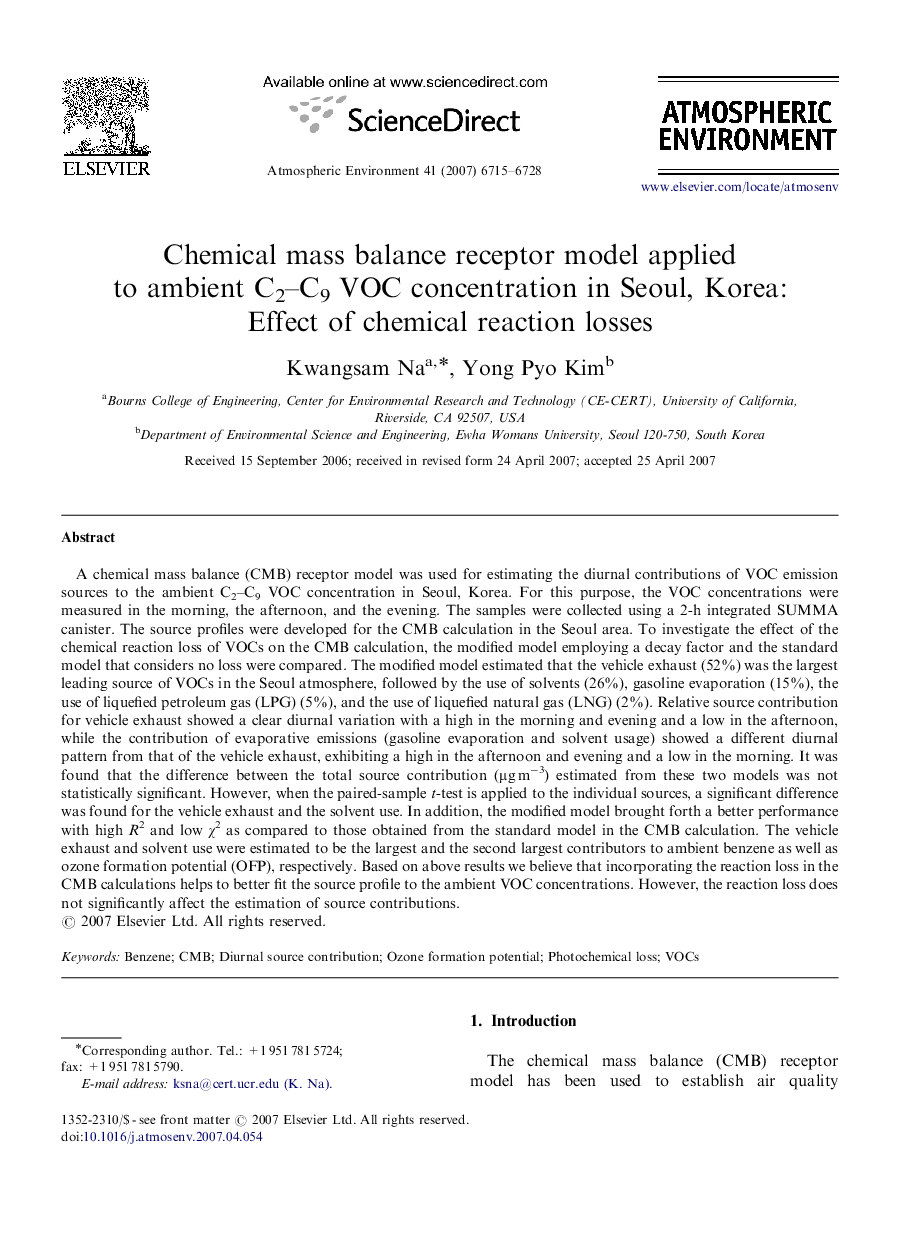| کد مقاله | کد نشریه | سال انتشار | مقاله انگلیسی | نسخه تمام متن |
|---|---|---|---|---|
| 4442335 | 1311147 | 2007 | 14 صفحه PDF | دانلود رایگان |

A chemical mass balance (CMB) receptor model was used for estimating the diurnal contributions of VOC emission sources to the ambient C2–C9 VOC concentration in Seoul, Korea. For this purpose, the VOC concentrations were measured in the morning, the afternoon, and the evening. The samples were collected using a 2-h integrated SUMMA canister. The source profiles were developed for the CMB calculation in the Seoul area. To investigate the effect of the chemical reaction loss of VOCs on the CMB calculation, the modified model employing a decay factor and the standard model that considers no loss were compared. The modified model estimated that the vehicle exhaust (52%) was the largest leading source of VOCs in the Seoul atmosphere, followed by the use of solvents (26%), gasoline evaporation (15%), the use of liquefied petroleum gas (LPG) (5%), and the use of liquefied natural gas (LNG) (2%). Relative source contribution for vehicle exhaust showed a clear diurnal variation with a high in the morning and evening and a low in the afternoon, while the contribution of evaporative emissions (gasoline evaporation and solvent usage) showed a different diurnal pattern from that of the vehicle exhaust, exhibiting a high in the afternoon and evening and a low in the morning. It was found that the difference between the total source contribution (μg m−3) estimated from these two models was not statistically significant. However, when the paired-sample t-test is applied to the individual sources, a significant difference was found for the vehicle exhaust and the solvent use. In addition, the modified model brought forth a better performance with high R2 and low χ2 as compared to those obtained from the standard model in the CMB calculation. The vehicle exhaust and solvent use were estimated to be the largest and the second largest contributors to ambient benzene as well as ozone formation potential (OFP), respectively. Based on above results we believe that incorporating the reaction loss in the CMB calculations helps to better fit the source profile to the ambient VOC concentrations. However, the reaction loss does not significantly affect the estimation of source contributions.
Journal: Atmospheric Environment - Volume 41, Issue 32, October 2007, Pages 6715–6728